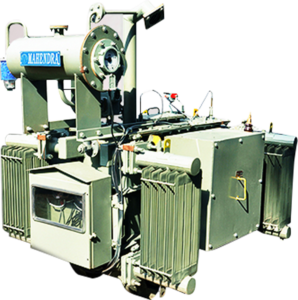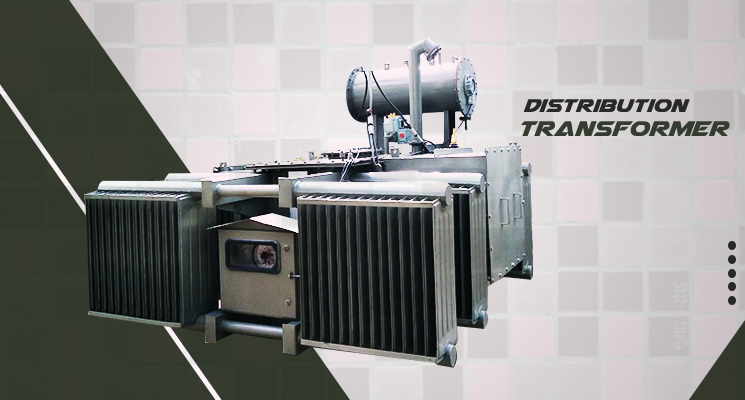Transformers have become an indispensable need of the hour considering the number of benefits they offer to electrical systems for transforming and distributing electricity. There are a myriad of transformers available considering the different requirements. The configuration, design, functioning, and components of these transformers vary from one another. In this blog, we will study a Transformer and an Inverter Duty Solar Transformer and how they differ. But before checking their differences, let’s know what they are.
What is an Inverter Duty Solar Transformer?
 These transformers are responsible for converting DC (direct current) into AC (alternating current) at a relatively low voltage. The voltage level is later adjusted or increased according to the voltage requirement of the electrical devices. The Inverter Duty Solar Transformer is mainly used in the solar power system by connecting them to the grid. These transformers are used for relatively low-power conversions. Mahendra Transformers is one of the leading Inverter Duty Transformers Manufacturers in India.
These transformers are responsible for converting DC (direct current) into AC (alternating current) at a relatively low voltage. The voltage level is later adjusted or increased according to the voltage requirement of the electrical devices. The Inverter Duty Solar Transformer is mainly used in the solar power system by connecting them to the grid. These transformers are used for relatively low-power conversions. Mahendra Transformers is one of the leading Inverter Duty Transformers Manufacturers in India.
Features of Inverter Duty Solar Transformer:
- High Efficiency: Helps in maintaining voltage stability despite the fluctuations occurring during the generation of power from solar panels.
- Thermal Management: Suitable for use in a wide variety of applications including solar panels, windmills, control panels, photovoltaic grids, and multiple other transformers.
- Harmonic Handling: Designed to handle higher harmonic content typically produced by inverters.
- Voltage Stability: Weather and temperature-resistant transformers suitable to work up to 50 degrees Celsius temperature.
| Power Rating | 100 KVA to 1600 KVA |
| Number of Phase | 3-Phase |
| Voltage Ratio | 11KV/433V (can be customized) |
| Cooling Type | Oil Cooled |
| Winding Material | Mild Steel |
| Brand | Mahendra |
| Country of Origin | Made in India |
| Warranty | 2 Years |
| Frequency | 50-60 Hz |
What is a Transformer?

Transformers are helpful in transmitting electrical energy from one circuit to another circuit or multiple circuits by utilizing electromagnetic induction. Different electrical circuits require electrical currents of different voltages according to the requirements of the electrical devices or power grids. Transformers help transmit the electric current at the required voltage by decreasing or increasing the voltage level.
Key Functions of Transformer:
- Voltage Regulation: Responsible for regulating voltage by stepping up or stepping down the level of voltage as per the output voltage requirements.
- Isolation: Facilitates efficient transmission of electricity to support different residential, commercial, and industrial applications.
- Impedance Matching: Safeguards the electrical devices and circuits during the short circuit or fault by offering isolation in between the circuits.
- Power Distribution: Helps in reducing the loss of electrical energy during the long-distance transmission of electrical power.
Differences Between Standard Transformer and Inverter Duty Solar Transformer
1. Built and Design:
- Standard Transformer: These transformers are known to be sturdy and built with a simple configuration to match the requirements of multiple applications. They are mainly designed to meet the requirements of power transmission and power generation at different places.
- Inverter Duty Solar Transformer: These transformers are a perfect arrangement of transformers and inverters and are helpful in handling the distribution of electrical power at low and medium voltage efficiently.
2. Cooling Requirements:
- Standard Transformers: Typically employ oil and air cooling methods suitable for their steady-state operations.
- Inverter Duty Solar Transformer: Requires more sophisticated cooling techniques due to higher thermal stress from inverter operations. This might include forced air or oil cooling with additional heat sinks or radiators.
3. Harmonic Handling:
- Standard Transformer: Generally designed to handle minimal harmonic distortion as seen in conventional AC power systems.
- Inverter Duty Solar Transformer: Specifically engineered to manage higher levels of harmonics and electrical noise generated by inverters, ensuring clean and stable power output.
4. Efficiency and Performance:
- Standard Transformer: Aim for general efficiency, which is sufficient for traditional power systems but may not be optimized for the high-efficiency needs of solar applications.
- Inverter Duty Solar Transformer: Prioritize high efficiency to match the performance of solar inverters, thereby minimizing losses and maximizing power output.
5. Durability and Reliability:
- Standard Transformer: Designed for predictable, stable grid conditions.
- Inverter Duty Solar Transformer: Built to withstand the variable and often harsh conditions of solar power generation, including rapid changes in load and environmental factors.
Applications
Standard Transformer:
- Utility Grids: Used extensively in stepping up and down voltages for transmission and distribution.
- Industrial Applications: Employed in manufacturing plants and other industrial settings for various electrical needs.
- Residential Areas: Utilized in distributing power to homes and small businesses.
Inverter Duty Solar Transformer:
- Solar Farms: Essential for large-scale solar power plants where inverters convert DC to AC for grid integration.
- Residential Solar Systems: Used in-home solar installations to ensure efficient power conversion and distribution.
- Commercial Solar Projects: Integral to commercial solar setups, providing reliable power conversion and grid compatibility.
Conclusion
While transferring and regulating electrical power is a primary function maintained by both Standard Transformers and Inverter Duty Solar Transformer, their operational features and designs are specific to different applications. It is important for everyone participating in solar energy projects to understand these differences to select the correct transformer type and improve efficiency, honesty, and performance. The specialized function of Inverter Duty Solar Transformer, will become more important in improving solar power systems as solar energy continues to increase. If you want to buy Inverter Duty Solar Transformer, we Mahendra Transformers is one of the largest Inverter Duty Transformers Manufacturers in India.
FAQs: About Inverter Duty Solar Transformer
Q: What is an Inverter Duty Solar Transformer?
Ans: An inverter duty solar transformer is a specially designed transformer made to manage the electrical requirements and characteristics of solar power plants. These transformers are designed to work with the output from solar inverters, which frequently have unique waveform features like changing frequencies and non-sinusoidal waveforms.
Q: Why are Inverter Duty Solar Transformer important for solar power systems?
Ans: Inverter duty transformers are important because they ensure efficient and reliable power transfer from solar inverters to the grid or to the local load. They are designed to handle the specific electrical patterns and harmonics generated by inverters, which can differ from those produced by traditional generators or power sources. Properly matched transformers help maintain system efficiency, stability, and longevity.
Q: What are the key features of Inverter Duty Solar Transformer?
Ans: Key features include:
Enhanced Cooling: These transformers often have improved cooling systems to handle the heat generated by high-frequency harmonics.
Robust Insulation: They are designed with insulation systems that can withstand the electrical stress caused by inverter outputs.
Harmonic Filtering: Some inverter duty transformers include features to mitigate harmonics and prevent interference with other electrical equipment.
High Efficiency: They are optimized for high efficiency to minimize losses and ensure that the maximum amount of power is delivered to the grid or load.
Q: What are the common specifications to look for in an Inverter Duty Solar Transformer?
Ans: Important specifications include:
Voltage Rating: Ensure it matches the system’s voltage requirements.
Power Rating: It should be appropriately sized for the solar array’s capacity.
Frequency Response: The transformer should be capable of handling the frequency characteristics of the inverter output.
Harmonic Tolerance: The transformer should be able to handle the harmonic content generated by the inverters.
Cooling Type: Confirm the cooling method (air-cooled, oil-cooled, etc.) suits the installation environment.
Q: How do Inverter Duty Solar Transformer differ from standard transformers?
Ans: Inverter duty transformers are designed specifically to accommodate the non-sinusoidal waveforms and harmonic distortions produced by solar inverters. Standard transformers are usually built for traditional sinusoidal waveforms and may not handle the unique electrical characteristics of inverter outputs as effectively. Inverter duty transformers typically have enhanced insulation, cooling, and harmonic filtering features.
Q: Can I use a standard transformer for a solar power system?
Ans: While using a normal transformer is technically possible, it is not recommended. The output of the inverter may be too much for standard transformers to manage, which could result in decreased efficiency, possible overheating, and early failure. A transformer made especially for inverter duty will provide maximum performance and dependability.
Q: What maintenance do Inverter Duty Solar Transformer require?
Ans: Maintenance needs are generally minimal but include:
Regular Inspections: Check for signs of overheating, insulation deterioration, and any physical damage.
Cleaning: Ensure the cooling systems and ventilation are free from debris and dirt.
Testing: Periodic testing of insulation resistance and other electrical parameters to ensure proper operation.
Q: Where are Inverter Duty Solar Transformer typically installed?
Ans: These transformers are commonly installed at the point where the solar array connects to the grid or at a central location within a solar power plant. They are usually located in transformer enclosures or substations designed to protect them from environmental factors and ensure proper cooling.
Q: How do I select the right Inverter Duty Solar Transformer for my solar project?
Ans: To select the right transformer, you should:
Determine Power Requirements: Match the transformer’s power rating with your solar system’s output.
Assess Electrical Characteristics: Ensure compatibility with the inverter’s voltage, frequency, and harmonic output.
Consider Environmental Factors: Choose a transformer with appropriate cooling and insulation for the installation environment.
Consult a Professional: Engage with an electrical engineer or a transformer specialist to ensure all specifications and requirements are met.


